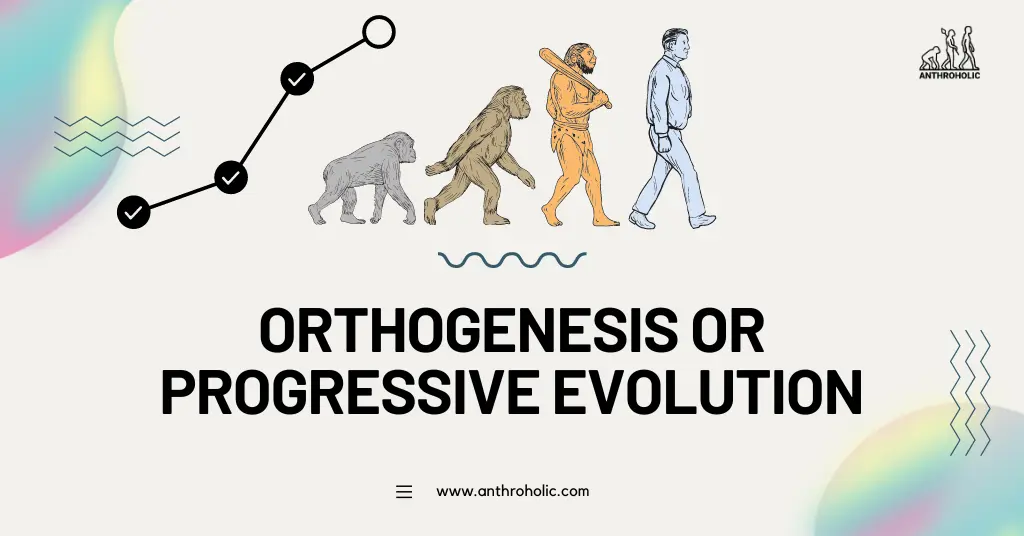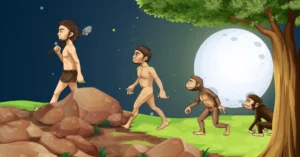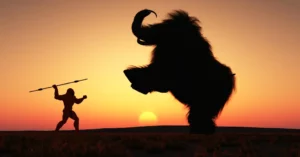Orthogenesis or Progressive Evolution
Orthogenesis, also known as Progressive Evolution, is a biological theory that suggests species evolution follows a predetermined path, leading to a specific endpoint. This theory stands apart from the more commonly accepted Darwinian evolution model, which posits that evolution proceeds randomly, influenced primarily by natural selection.

Understanding Orthogenesis: A Brief Introduction
Orthogenesis, from the Greek words ‘Ortho’ meaning straight and ‘Genesis’ meaning origin, implies a straight or directed line of evolutionary development. Biologists who adhere to the orthogenesis theory believe that once a species starts to evolve in a particular direction, it continues to progress in that direction due to an intrinsic driving force, irrespective of external influences.
Origins and Early Supporters
Orthogenesis emerged in the late 19th and early 20th century, amidst growing dissatisfaction with natural selection as the sole determinant of evolutionary paths. Early advocates of the theory, like American paleontologist Edward Drinker Cope, argued for the existence of inherent trends in evolution.
Key proponents include:
- Leo Berg: The Russian biologist championed the concept of ‘Nomogenesis,’ a form of orthogenesis that incorporates Lamarckian evolution.
- Theodosius Dobzhansky: A key figure in shaping the Modern Evolutionary Synthesis, he proposed that certain evolutionary trends could arise from genetic factors.
Principles of Orthogenesis
The theory of orthogenesis is based on three primary principles:
- Intrinsic Momentum: This principle proposes that evolutionary changes within species are driven by inherent forces that continue once set into motion.
- Directionality: According to this, the evolutionary changes follow a specific, non-random direction.
- Goal-Oriented Evolution: This principle suggests that evolution progresses toward predetermined or fixed endpoints.
Orthogenesis Versus Darwinian Evolution
| Orthogenesis | Darwinian Evolution | |
|---|---|---|
| Intrinsic forces | Inherent forces drive evolution | No internal driving force |
| Directionality | Follows a predetermined direction | Direction driven by external factors (natural selection) |
| Goals | Evolution progresses towards a specific endpoint | No pre-defined endpoint, evolution continues indefinitely |
Controversies and Criticisms
While orthogenesis gained some support, it also faced significant criticisms. The most notable objections include:
- Lack of Scientific Evidence: Critics point out that orthogenesis lacks empirical evidence. While patterns of progressive complexity can be observed, they can also be explained through natural selection and random genetic drift.
- Teleological Nature: The theory is seen as teleological, implying a purpose or end-goal in evolution, which contradicts the widely accepted view of evolution as a non-purposeful process.
Modern Perspectives on Orthogenesis
Despite criticism, the concept of orthogenesis finds relevance in specific aspects of modern evolutionary biology.
- Macroevolution: While natural selection and genetic drift explain microevolutionary changes, some scientists argue that macroevolutionary trends may still involve orthogenetic principles.
- Punctuated Equilibrium: This theory, proposed by Niles Eldredge and Stephen Jay Gould, suggests that evolution involves long periods of stasis punctuated by rapid periods of change, somewhat aligning with orthogenesis.
- Genetic Constraints: Genetic factors can bias the direction of evolution, giving a semblance of predetermined directionality, a concept central to orthogenesis.
Conclusion
While orthogenesis has faced considerable criticism, aspects of the theory continue to echo in modern evolutionary concepts. It remains a fascinating chapter in the history of evolutionary biology, prompting ongoing debate on the mechanisms driving the wondrous diversity of life on Earth.
References
- Bowler, P. J. (1988). The non-Darwinian revolution: reinterpreting a historical myth. Johns Hopkins University Press.
- Eldredge, N., & Gould, S. J. (1972). Punctuated equilibria: an alternative to phyletic gradualism. In Models in Paleobiology (pp. 82-115). Freeman, Cooper and Company.
- Gould, S. J. (2002). The structure of evolutionary theory. Harvard University Press.
- Mayr, E. (1988). Toward a new philosophy of biology: observations of an evolutionist. Harvard University Press.
- Ruse, M. (1996). Monad to man: the concept of progress in evolutionary biology. Harvard University Press.



